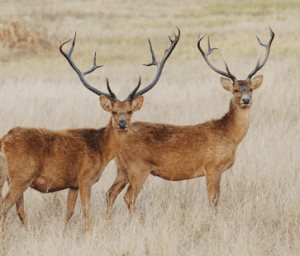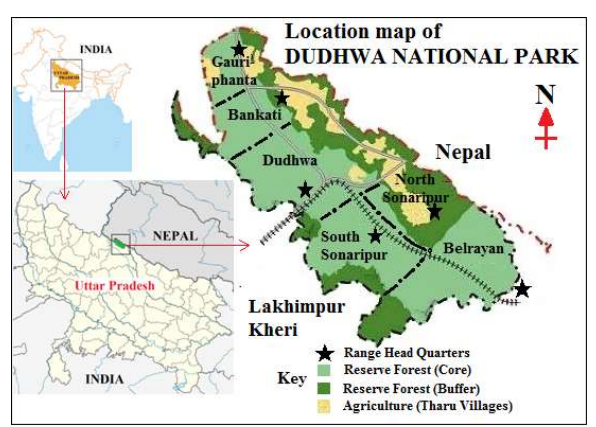Genetic profiling of swamp deer in Dudhwa planned
About Swamp Deer or Barasingha

- It is the state animal of Uttar Pradesh and Madhya Pradesh.
- The swamp deer differs from all other Indian deer species in that the antlers carry more than three tines (spikes).
- Because of this distinctive character it is designated “bārah-singgā”, meaning “twelve-horned”.
- Swamp deer are already extinct in Pakistan and Bangladesh. It is now found only in south- western Nepal and central and northeastern India.
- There are three subspecies of swamp deer found in the Indian Subcontinent.
- Western swamp deer (Rucervus duvaucelii) found in Nepal,
- Southern swamp deer (Rucervus duvaucelii branderi) found in central and north India and
- Eastern swamp deer (Rucervus duvaucelii ranjitsinhi) found in the Kaziranga and Dudhwa National Parks.
- With their numbers estimated at over 3,000, Dudhwa National Park has the largest number of barasingha in the country. They are also found in significant numbers in Kanha National Park in Madhya Pradesh.
- IUCN Status: Vulnerable, Protected Under WPA 1972 – Schedule I and CITES Appendix I.
- The swamp deer populations outside protected areas and seasonally migrating populations are threatened by poaching for antlers and meat, which are sold in local markets.
- Swamp deer lost most of its former range because wetlands were converted and used for agriculture so that suitable habitat was reduced to small and isolated fragments
Dudhwa National Park

- Dudhwa National Park or the Dudhwa Tiger Reserve lie adjacent to the Indo-Nepal border in Uttar Pradesh.
- It comprises Kishanpur and Katerniaghat Wildlife Sanctuaries which represent the excellent natural forests and greenery along the Terai region.
- The area of the Park is composed of a vast alluvial plain along the tributaries of Mohana and Suheli, interspersed with numerous rivulets, lakes and pools.
- The park has some of the best forests of ‘Sal’ trees in the world.
- It is also famous for its Swamp deers and Tiger population.
What is Genetic Profiling?
- DNA/Genetic profiling is the process where a specific DNA pattern, called a profile, is obtained from a person or sample of bodily tissue.
Why in the news?
- Genetic profiling of swamp deer in Dudhwa National Park is being done.
- Wildlife Institute of India (WII) is studying the swamp deers in Gangetic Rivers and of Kali River Basin (River Between Indo-Nepalease Border, it is also called Sharda river).
- Barasingha found in the Gangetic and Sharda basins would be compared to find out the genetic differences between them.
- It will also try to find out about the genetic health of Barasinghas.
References:
- https://www.upecotourism.in/DudhwaNationalPark.aspx
- https://en.wikipedia.org/wiki/Barasingha
- https://www.thehindu.com/news/national/other-states/genetic-profiling-of-swamp-deer-in-dudhwa-planned/article34092871.ece
- https://www.sciencelearn.org.nz/resources/1980-dna-profiling
- https://www.downtoearth.org.in/news/wildlife-biodiversity/near-extinct-hard-ground-swamp-deer-see-revival-in-kanha-69603
Subscribe
Login
0 Comments
